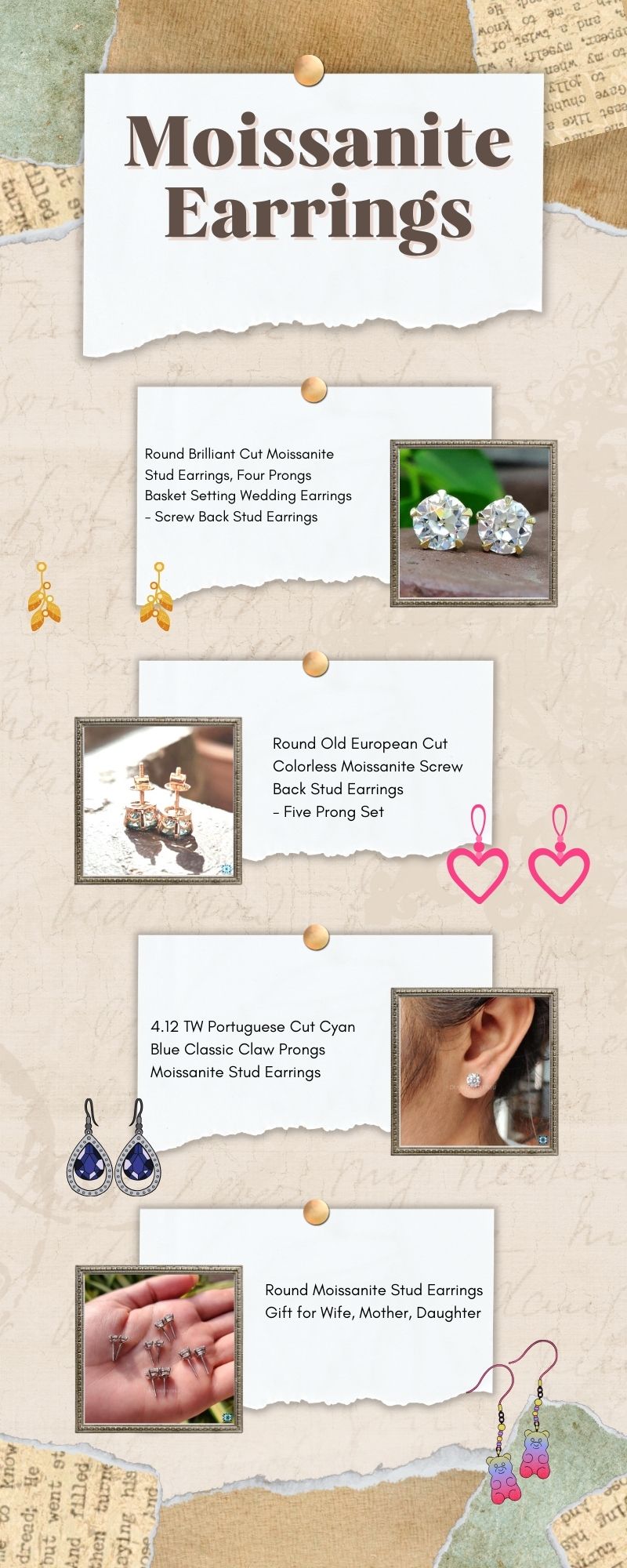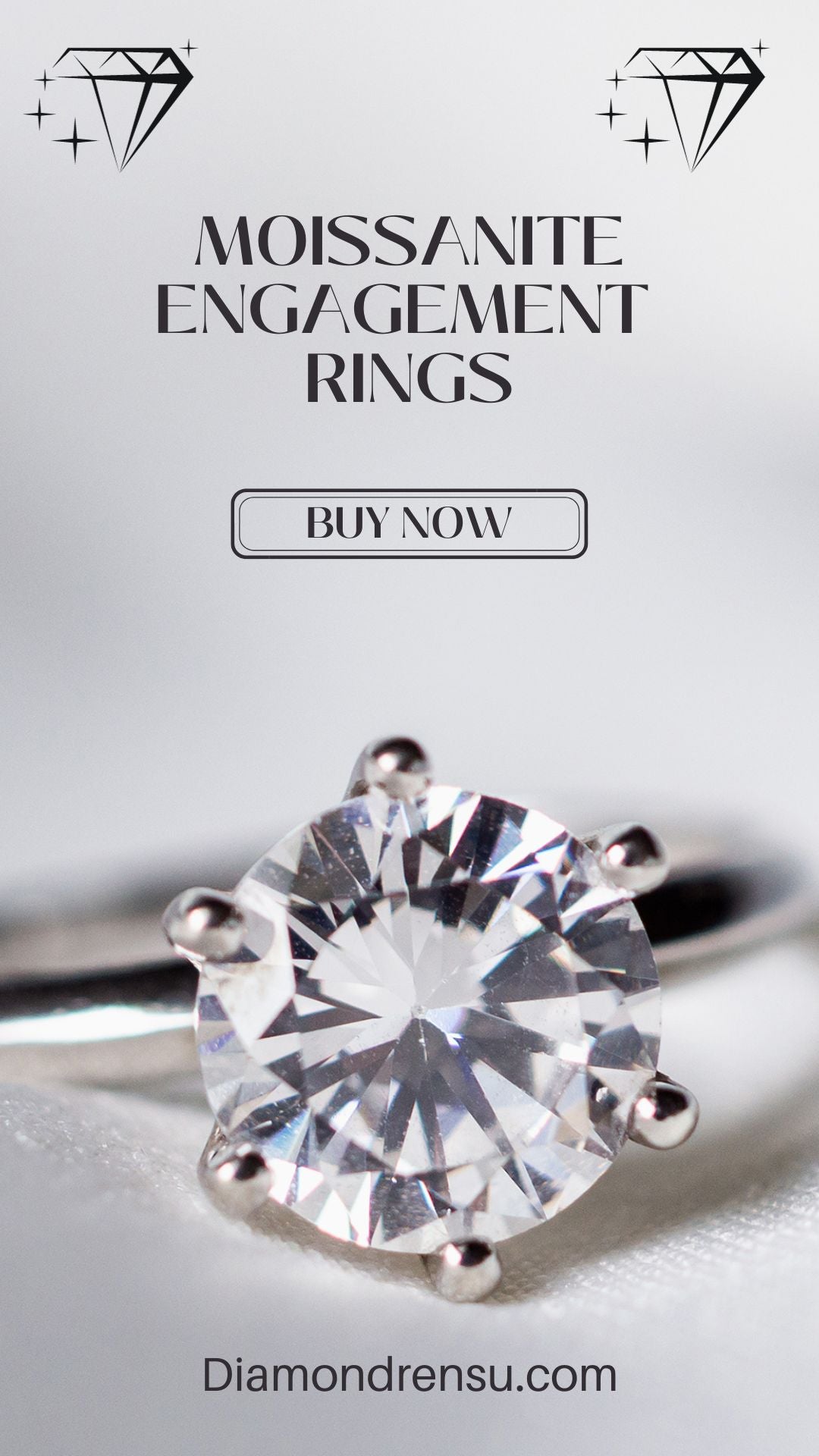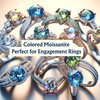
What Is the Best Quality Moissanite: Identifying Top-Grade Gems
When evaluating the quality of moissanite, a diamond simulant, it is essential to consider its origins and properties. Moissanite is a form of silicon carbide and it is recognized for its hardness, which is second only to diamonds on the Mohs scale, and for its brilliant sparkle. Quality variations in moissanite are often determined by factors such as clarity, color, cut, and carat weight—similar to traditional diamond grading.
I assess the best quality moissanite by paying close attention to its optical characteristics. Ideally, top-tier moissanite should have a clear, colorless appearance without any visible inclusions or blemishes.
The cut should enhance its natural brilliance, maximizing the stone's fire and creating exceptional sparkle. In the market for moissanite, recognizing these attributes ensures a selection that rivals the finest diamonds in appearance while providing a unique charm.
Moissanite also offers a more ethical and affordable alternative to diamonds, without compromising on the desired aesthetic. As a gemstone, it has gained popularity for those seeking sustainable and conflict-free options. My recommendations for those interested in purchasing moissanite focus on finding reputable vendors who provide high-quality stones with transparent grading reports. This allows for an informed choice in selecting the best quality moissanite that aligns with individual preferences and values.
Understanding Moissanite
Moissanite is a gemstone steeped in history and discovery, boasting unique qualities apart from diamonds, such as its composition—silicon carbide—that endows it with remarkable hardness and brilliance.
History of Moissanite
I find the origin of moissanite both intriguing and relatively recent in the broad realm of gemstones. Natural moissanite was first discovered by Dr. Henri Moissan in 1893 while examining rock samples from Meteor Crater in Arizona. Mistaken initially for diamond, it was later identified as silicon carbide, a rare mineral. Today, most moissanite is lab-created, imparting sustainable perfection to this durable gem.
Moissanite vs. Diamonds
| Aspect | Moissanite | Diamonds |
|---|---|---|
| Composition | Silicon carbide (SiC) | Carbon (C) |
| Hardness (Mohs scale) | 9.25 | 10 |
| Brilliance & Fire | Greater brilliance and fire due to higher refractive index. | Renowned for brilliance and fire but typically slightly lower than moissanite. |
| Color | Generally near-colorless to faint yellow or greenish hue. | Range of colors including colorless, near-colorless, and fancy colors. |
| Price | Generally more affordable than diamonds. | Varies widely based on the 4Cs (color, clarity, cut, carat weight). |
| Origin | Laboratory-created (synthetic) moissanite is common. | Natural and lab-created (synthetic) diamonds available. |
| Environmental Impact | Considered more environmentally friendly as it's lab-created. | Mining diamonds has environmental considerations. |
When I compare moissanite and diamonds, several distinct differences surface. While diamonds are traditionally known for their "fire" and hardness—ranking a perfect 10 on the Mohs scale—moissanite is not far behind, with a Mohs scale ranking of 9.25 to 9.5. Moissanite's refractive index is higher than a diamond's, which gives it more sparkle; however, its dispersive power, which creates the characteristic "fire," is nearly 2.4 times more than that of diamonds, leading to increased brilliance.
Physical and Chemical Properties
My assessment of moissanite's physical and chemical properties reveals a robust and extraordinary gemstone. Chemically, it is composed of silicon carbide, a compound with a hexagonal crystal structure that contributes to moissanite's exceptional hardness. It is resistant to scratching, chipping, and abrasions, making it an excellent choice for jewelry that endures daily wear. Its thermal conductivity is closer to that of diamonds than any other gemstone, presenting similarities that skilled gemologists can differentiate.
Evaluating Moissanite Quality
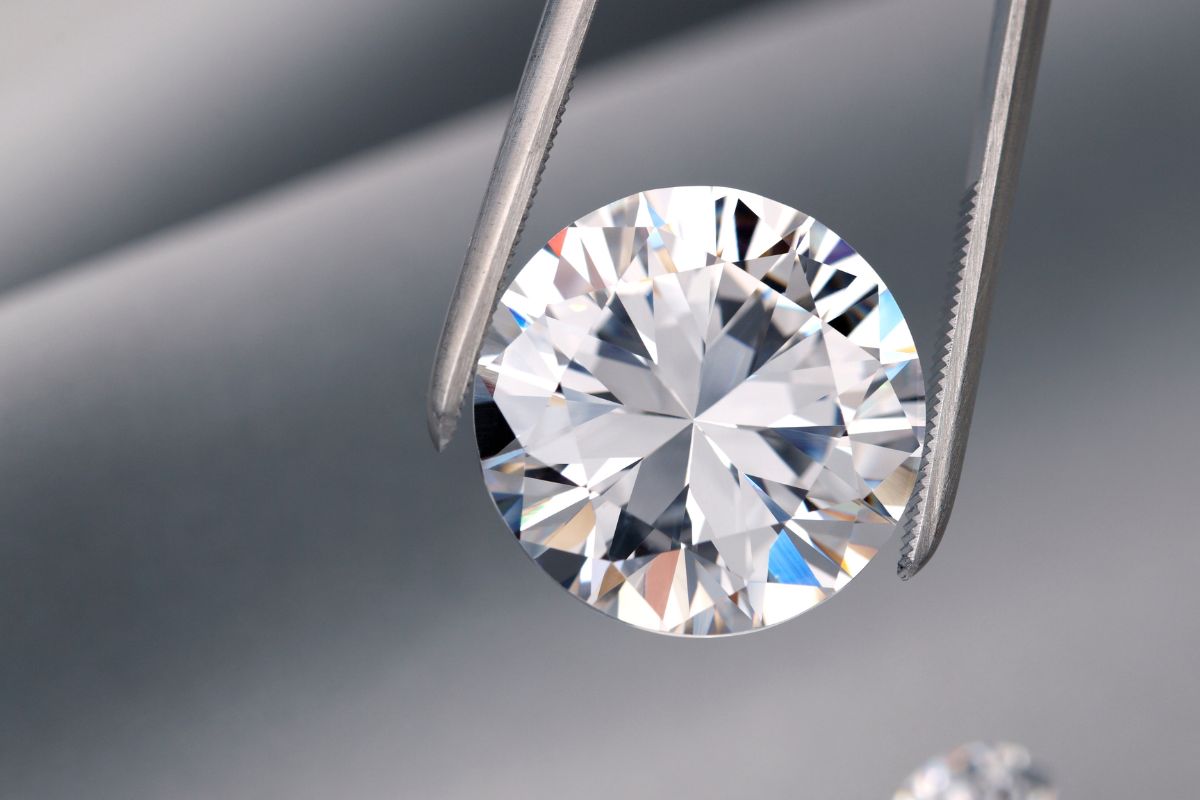
When I examine moissanite quality, I focus on the renowned 4C's—Color, Clarity, Cut, and Carat Weight—just as one would with diamonds. Each of these factors is crucial in determining the overall appearance and value of moissanite stones.
The 4C's of Moissanite
Color: Moissanite tends to be classified from colorless to near-colorless. The less color a moissanite has, the higher its value. A colorless moissanite closely mimics the appearance of a high-quality diamond.
Clarity: Clarity in moissanite refers to the absence of internal imperfections or inclusions. Moissanite with a high clarity grade has fewer visible inclusions, which enhances its sparkle and perceived quality.
Color and Clarity
-
Color Grade: The scale ranges from D to K, with D being completely colorless, and is a prime determinant in quality.
- D-F: Colorless; premium quality.
- G-I: Near-colorless; excellent value, with slight color detected by an expert.
-
Clarity Grade: Ranges from Flawless to Included, with Flawless being the most desirable.
- FL-IF: Flawless to Internally Flawless; no visible inclusions or blemishes.
- VVS1-VVS2: Very, Very Slightly Included; inclusions hard to see under 10x magnification.
Cut and Carat Weight
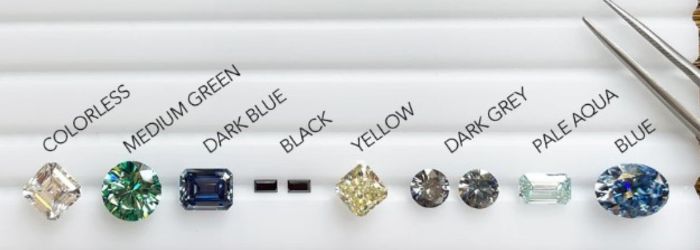
- Cut: This affects the stone's brilliance and is not to be compromised. An excellent cut moissanite will have superb brilliance.
- Carat Weight: Though it impacts size, it does not directly relate to quality. However, the larger the moissanite, the more apparent any inclusions or color tints might be.
When evaluating cut, the quality grade can range from excellent to poor. A stone with a rating of very good represents a balanced compromise between size and quality, while fair or poor cuts do compromise the stone's brilliance for size.
When considering carat weight, I always remember that moissanite is lighter than diamonds, so they are often sold by their size in millimeters rather than by weight. This must be taken into account in order to accurately compare the size of moissanite to that of diamonds.
Moissanite Jewelry Design
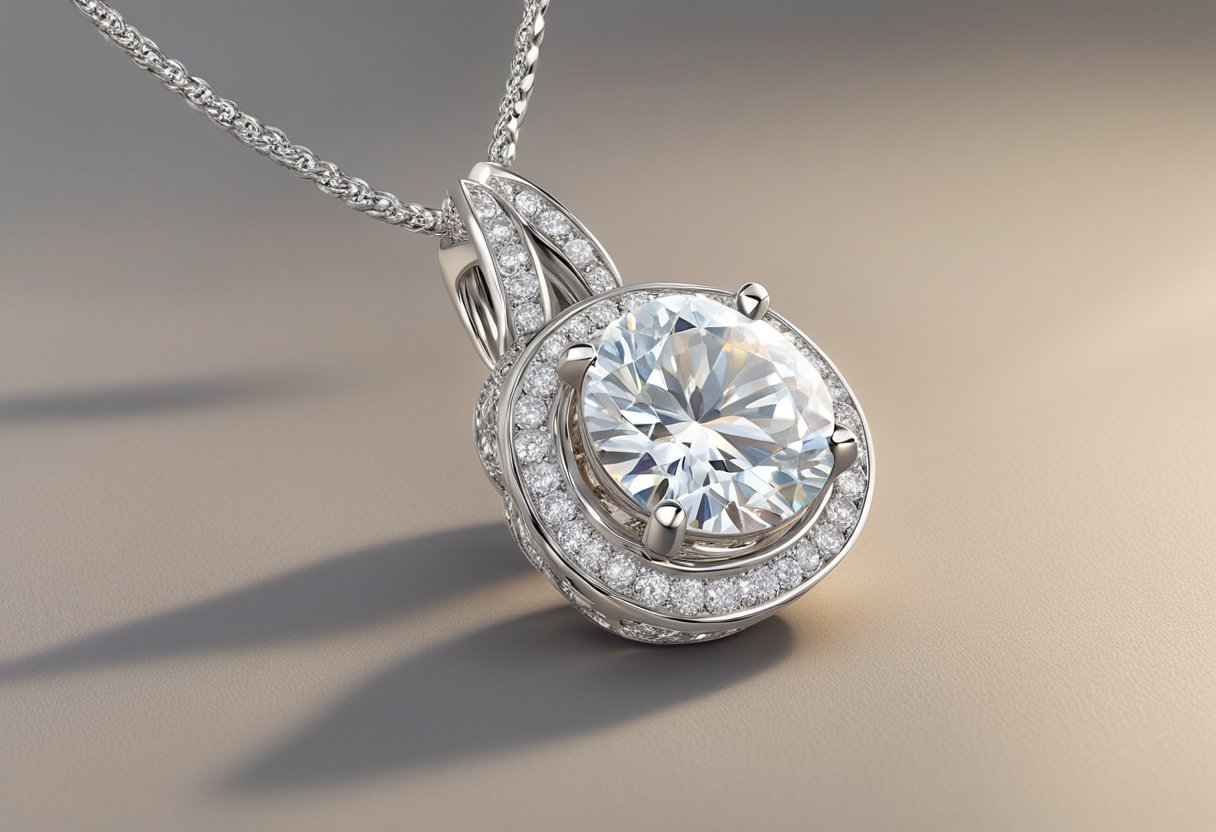
In my expertise, the intrinsic value and bespoke potential of moissanite jewelry design, particularly for engagement rings, has created a vibrant market. Here, I'll detail the allure of its designs, highlighting engagement pieces, the gamut of shapes and styles, and the wide array of customization options available.
Engagement Rings and Jewelry
In my experience, moissanite has established itself as a coveted center stone for engagement rings and jewelry, rivaling the traditional diamond. Its brilliant sparkle and near-identical appearance to diamonds make moissanite a compelling choice for couples seeking affordable luxury. What distinguishes moissanite in engagement pieces is not only its cost-effectiveness but also its durability, ranking second in hardness to diamonds, ensuring these symbols of love stand the test of time.
Shape and Style Variations
The variety of shape and style options in moissanite is quite expansive. Standard shapes like round, princess, and cushion cuts are widely popular, but there is also a growing interest in unique ones like pear, radiant, and marquise. Each shape interacts with light differently, offering a spectrum of brilliance and fire that can be matched to a person's preference. Style variations range from vintage to modern and can greatly influence the overall feel of the jewelry.
Customization Options
Customization options allow me to create truly unique moissanite jewelry pieces. Whether it's choosing a setting, such as solitaire or halo, or selecting the metal type—gold, platinum, or rose gold—these choices enable a personal touch. Engraving, using a combination of different gemstones, and designing a completely one-of-a-kind engagement ring are all possible with moissanite. It caters well to those desiring a customized engagement ring or jewelry piece that aligns closely with their personal style and values.
Comparing Moissanite Pricing
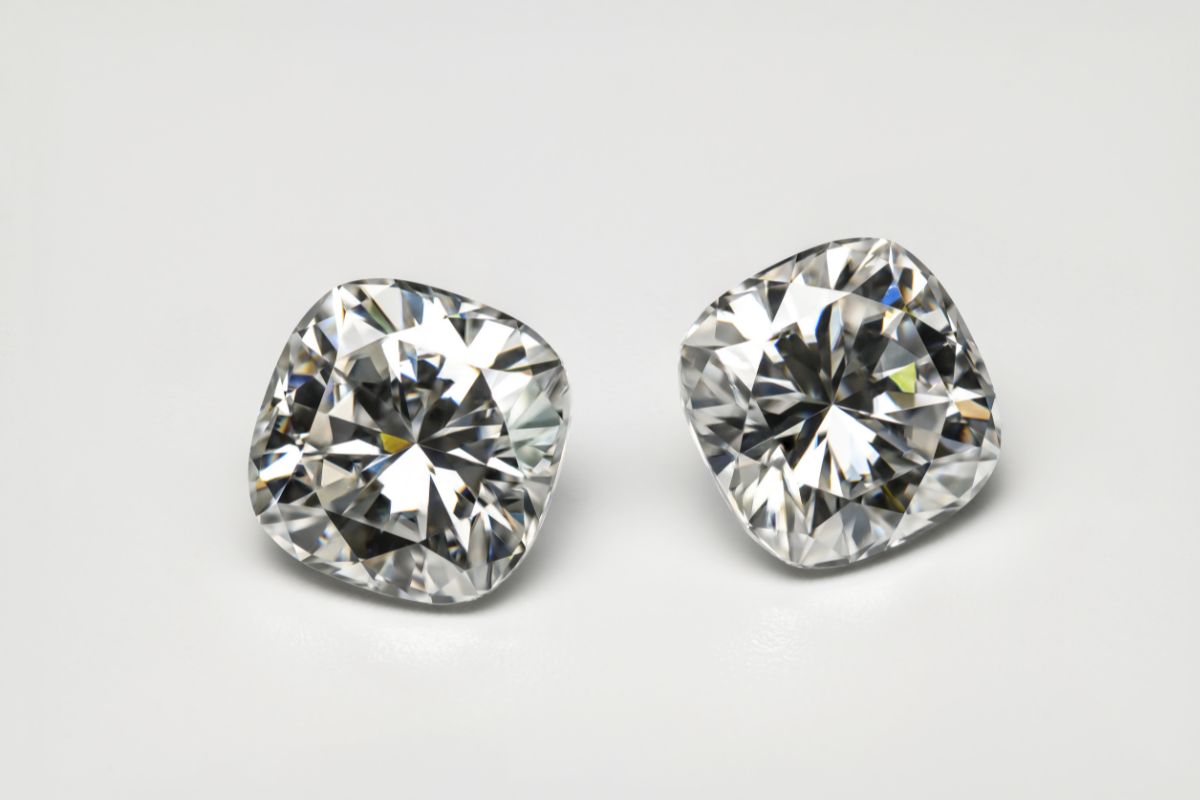
When consider the value and cost-efficiency of moissanite, it's important to examine its affordability, especially in comparison to diamonds. I'll guide you through this financial landscape, focusing on the specific price points and the overall affordability of moissanite as a gemstone choice.
Affordability and Value
Moissanite is a cost-effective alternative to diamonds, offering significant savings. Consumers often find that moissanite can cost between 5%–10% of a diamond's price. The exact price can vary based on size, clarity, and where it is purchased, but for a high-quality gemstone, moissanite offers remarkable affordability without compromising on sparkle or aesthetic appeal.
Moissanite vs. Diamond Cost Comparison
When comparing moissanite and diamond pricing directly, the differences are stark. On average, a one-carat diamond can cost anywhere from $2,500 to $18,000, while a similarly sized moissanite might only set you back around $300 to $600. Here's a simple cost comparison table
| Carat Size | Average Diamond Price | Average Moissanite Price |
|---|---|---|
| 1.0 Carat | $2,500 - $18,000 | $300 - $600 |
| 2.0 Carats | $8,000 - $50,000 | $600 - $1,200 |
The price gap widens as the carat size increases, making moissanite a highly affordable option for those who covet a large, eye-catching gemstone without an equally large expense.
The Ethical and Eco-Friendly Choice
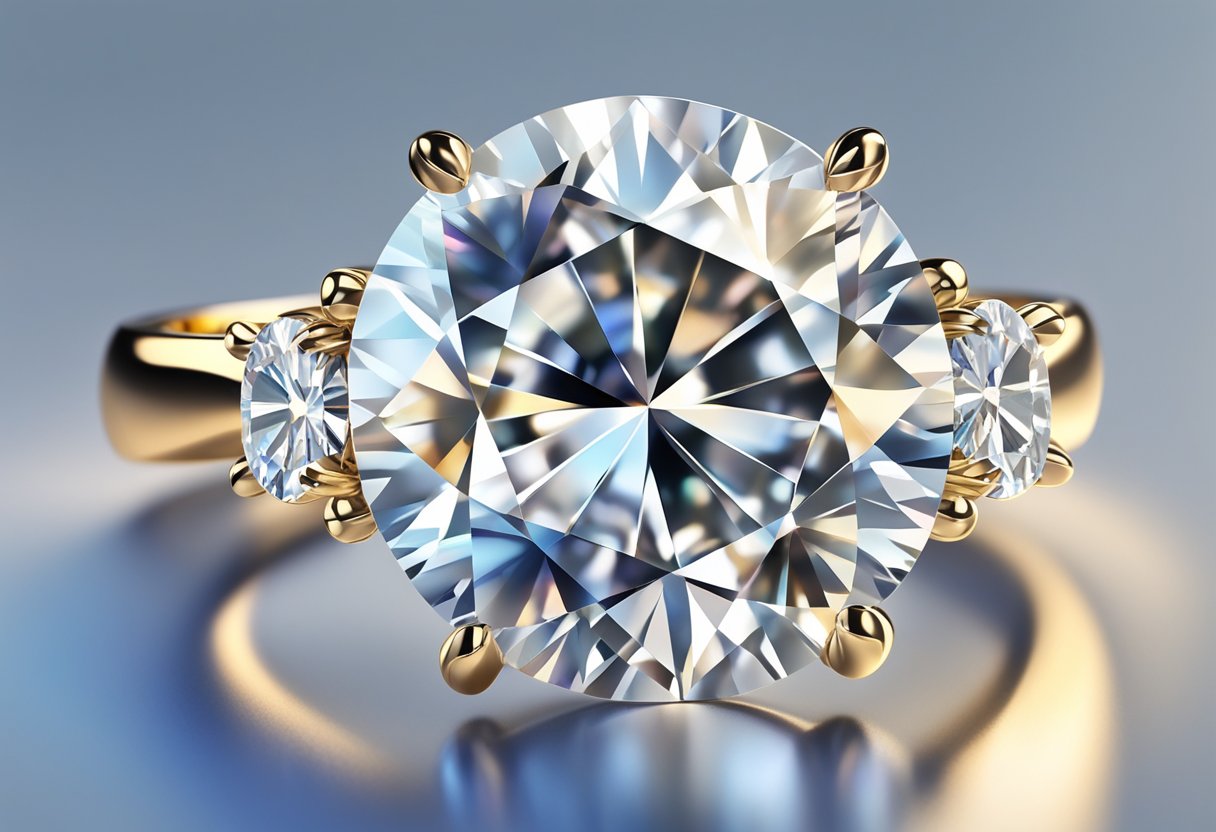
I consider moissanite the best choice for consumers who value both ethics and the environment. It stands as a conflict-free and sustainable alternative to traditional gemstones.
Lab-Grown Benefits
Moissanite is created in a controlled lab environment, which allows for ethical sourcing free from the ethical dilemmas often associated with the mining industry. As I understand it, lab-grown moissanite eliminates the risks of worker exploitation and the funding of conflict that can be associated with some diamond mining operations.
Key Points:
- Ethical Sourcing: Guaranteed conflict-free production.
- Worker Safety: Lab environments are regulated for safety, preventing dangerous mining conditions.
Environmental Impact and Sustainability
The environmental impact of moissanite is minimal compared to that of mining for diamonds. The process requires considerably less disruption to ecosystems and reduces the carbon footprint associated with large-scale extraction operations.
Sustainability Facts:
- Less Land Displacement: Virtually no ecological damage in comparison to extensive mining sites.
- Reduced Carbon Footprint: Lab creation of moissanite has a lower environmental impact than traditional diamond extraction.
By selecting moissanite, I am advocating for an eco-friendly option that aligns with sustainable practices while also ensuring ethical integrity in my jewelry choices.
Durability and Maintenance
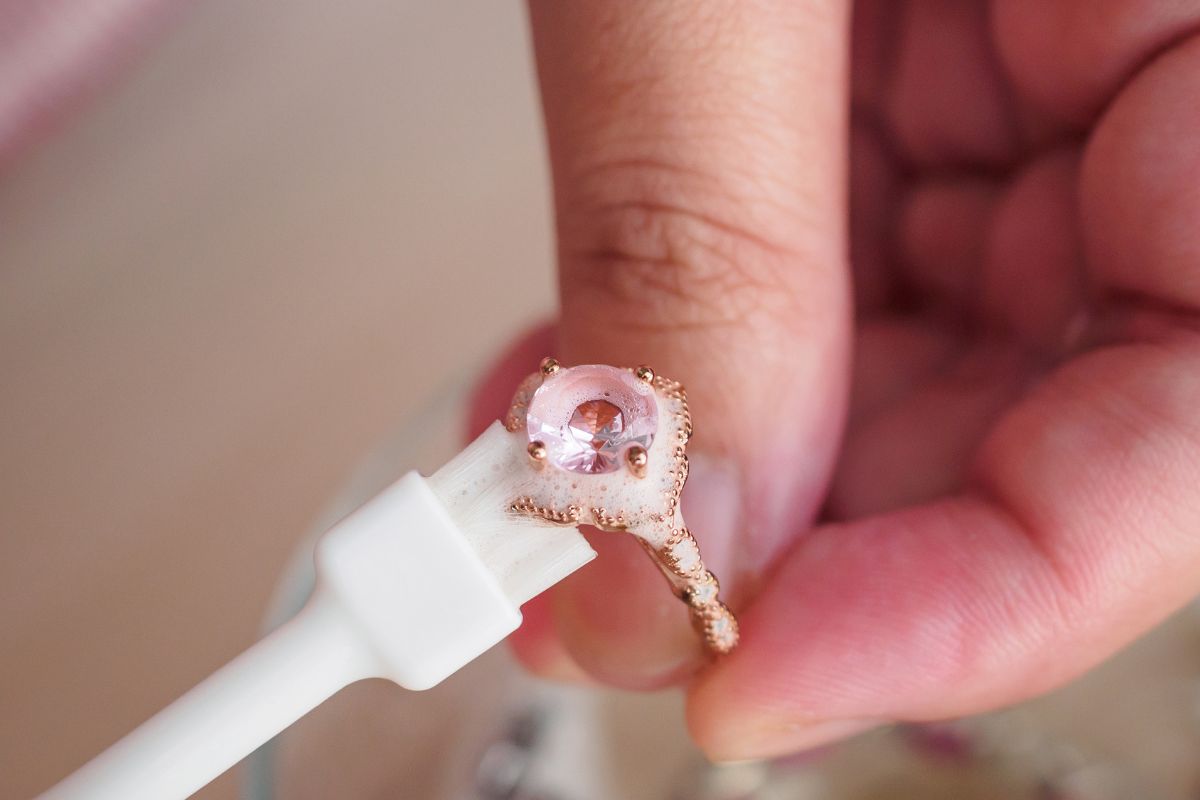
In examining the best quality moissanite, I find that its durability and need for maintenance are paramount considerations. My focus here is on conveying what you need to know about moissanite's ability to withstand everyday wear and the specific care instructions that can help maintain its brilliance over time.
Hardness and Everyday Wear
Moissanite ranks impressively high on the Mohs scale of hardness, just below diamond, which is the hardest known mineral. With a score of 9.25, moissanite is exceptionally resistant to scratches and abrasions, making it ideal for everyday wear. Even with frequent use, I observe that the stones retain their sparkle and structure over long periods. This resistance to wear implies that moissanite jewelry can be a stalwart companion in daily activities without the fear of easy damage.
Care Instructions
To ensure moissanite maintains its luster, I recommend a simple, regular cleaning routine:
- Use a soft-bristled brush to gently remove any dust or dirt.
- Prepare a solution of warm water and mild dish soap.
- Soak the moissanite jewelry in the solution for 20-30 minutes.
- Rinse thoroughly with clean water.
- Dry with a soft, lint-free cloth.
For a more thorough clean, especially if the moissanite has been exposed to makeup, oil, or lotions, consider an ultrasonic cleaner. However, consulting the jewelry provider before using an ultrasonic cleaner is advised, as certain settings may not be suitable. My experience shows that these care steps are all that is required to maintain the shine and clarity of moissanite stones.
Brilliance and Fire
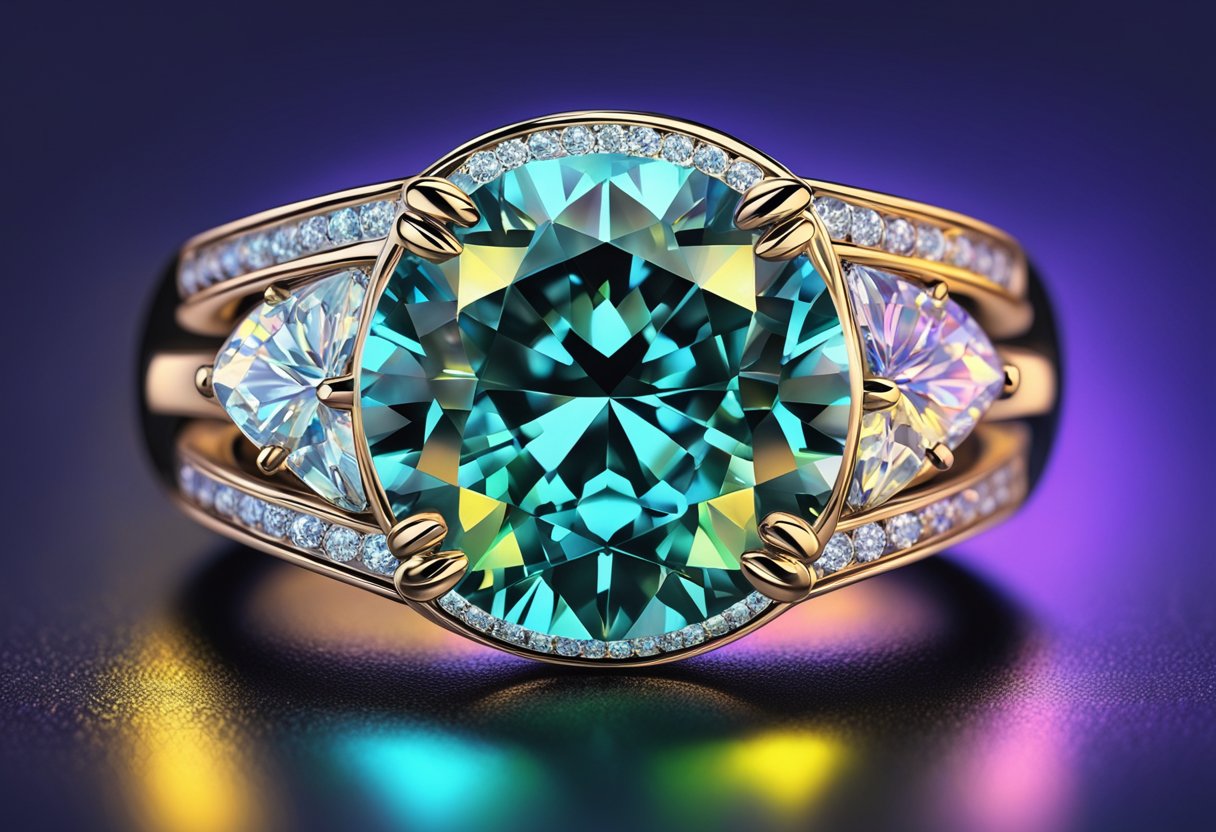
I find that when assessing the quality of moissanite, the two characteristics that often stand out are its brilliance and fire. These are essential qualities that contribute to moissanite's popularity as a gemstone.
Understanding Moissanite's Sparkle
Moissanite's sparkle is primarily due to its exceptional brilliance, which is the gemstone's ability to reflect white light. Its composition of silicon carbide allows for a refractive index that is higher than that of diamond, which is why, when I compare them side by side, the moissanite often exhibits more sparkle. Moissanite's unique crystal structure also contributes to its fire, which is the breaking of light into the colors of the spectrum. I've observed that moissanite often shows more fire than a diamond due to its higher dispersion.
Comparing Brilliance
When comparing moissanite to other gemstones, it becomes clear that moissanite offers an exceptional brilliance that is unrivaled by most other stones. This brilliance can be quantified and I've seen reports like one on ResearchGate that delve into the specifics of how moissanite's body color grade correlates with its perceived fire and brightness. The cut of the moissanite also plays a pivotal role in its brilliance, and cut quality directly impacts the display of sparkle and light performance within the stone. Therefore, when comparing, it's crucial to consider how the cut influences the brilliance that I perceive in the moissanite.
Moissanite Varieties and Brands
In my exploration of moissanite, I've found that the market offers a range of grades and quality levels, as well as several key brands that specialize in this gemstone. Consumers can choose from colorless to near-colorless stones, while factoring in the clarity grade that ranges from internally flawless to visibly included.
Different Grades and Quality
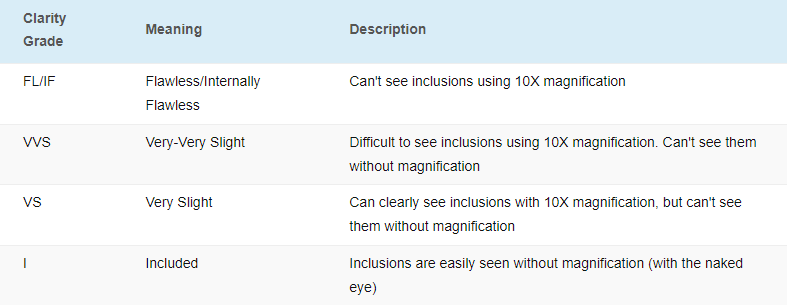
Moissanite is assessed much like diamonds, with grading scales for color and clarity. Colorless moissanite, such as the popular Forever One line from Charles & Colvard, represents the highest grade and mimics the appearance of a top-tier diamond. Stones are graded as colorless (D-E-F) or near-colorless (G-H-I), with the former being the most premium. Clarity grades include:
- VVS1 and VVS2: Very, very slightly included. Inclusions are difficult to see under 10x magnification.
- VS1 and VS2: Very slightly included. Inclusions are seen under magnification but are minor.
- SI1 and SI2: Slightly included. Inclusions are noticeable under magnification and may be visible to the naked eye.
- I1, I2, and I3: Included. Inclusions are obvious and can affect transparency and brilliance.
The finest moissanite also showcases excellent cut and symmetry, enhancing its sparkle and fire.
Leading Brands and Trademarks
Charles & Colvard remains a pioneer, with its Forever One range setting a benchmark for high-quality, colorless moissanite. Their stones are known for their outstanding brilliance and durability. Another noteworthy brand is Moissanite International, which supplies a variety of grades to cater to different consumer needs.
When looking for the best quality moissanite, consider both the grade of the stone and the reputation of the brand. Reputable brands ensure authenticity, provide warranties, and often have patented technologies to enhance the stone's quality. It's these aspects that uphold the stone's value and dictate its place within the market.
Making an Informed Purchase
When I buy moissanite, I ensure the choice is based on comprehensive research about the vendor's reputation and the certifications provided with the stone. Careful consideration of customer reviews and color grading helps me distinguish a high-quality diamond simulant from lesser options.
What to Look for in a Vendor
I prioritize vendors with a strong reputation for quality and service. It's important for me to find an affordable option without compromising on the value of the stone. I seek out vendors who offer a balance between cost and quality, ensuring that the moissanite I choose is a valuable addition to my collection.
- Transparency: Vendors should be open about where their moissanite comes from and how it's made.
- Inventory: A variety of cuts and sizes indicate a vendor who understands the diverse preferences of their customers.
- Pricing: Competitive yet realistic prices suggest the moissanite is of a quality consistent with genuine materials.
Certifications and Customer Reviews
Certifications are non-negotiable for me – they validate the color grading and quality of the moissanite. Top-grade moissanite should comply with stringent color grading standards, indicating minimal color and maximum brilliance.
- GIA Certification: A certificate from a reputable authority like GIA assures me of the stone's authenticity.
- AGS Grades: Vendors who provide AGS grades demonstrate a commitment to precision and quality.
Customer reviews offer real-world insight into the product and service quality. Positive feedback, especially regarding the moissanite being a convincing diamond simulant, supports my decision-making process.
- Feedback Analysis: I assess both the positive and negative reviews for consistent trends in customer satisfaction.
- Response Patterns: How a vendor responds to customer issues tells me about their commitment to service excellence.
By adhering to these principles, I confidently make informed purchases, selecting moissanite that meets my rigorous criteria for excellence.
Frequently Asked Questions
When assessing the best quality moissanite, it's important to consider various attributes that contribute to its overall appearance and durability. I will address common inquiries I frequently encounter about moissanite quality.
How do I differentiate between the grades of moissanite?
Grades of moissanite differ in terms of color, clarity, and cut. High-grade moissanite typically exhibits near-colorless to colorless quality, exceptional clarity with few inclusions or blemishes, and a precision cut that maximizes brilliance and fire.
What are the characteristics of top-grade moissanite?
Top-grade moissanite boasts a color grade as close to colorless as possible, excellent clarity without visible inclusions, and expert cutting techniques ensuring remarkable sparkle and fire, similar to what one would expect from a high-quality diamond.
Which moissanite brand is most comparable to natural diamonds?
Some brands specialize in creating moissanite that closely mirrors the optical properties of diamonds. One example is Charles and Colvard moissanite, known for crafting stones that rival the look and feel of natural diamonds.
What should I look for when choosing a moissanite engagement ring?
Look for moissanite with excellent cut, high clarity, and minimal color. Additionally, the ring's setting should enhance the stone's brilliance, and the certification should guarantee the moissanite's quality.
Are there noticeable differences between moissanite producers?
Yes, different moissanite producers may have distinct approaches to cutting and treating the stones, leading to variations in luster, color, and clarity. It benefits you to examine the offerings from various producers to identify the one that meets your standards for quality.
How do Charles and Colvard moissanite compare to other brands?
Charles and Colvard, the original creators of moissanite, often set the benchmark for quality in the industry, providing some of the clearest and most colorless moissanite available. Their stones are known for a high degree of craftsmanship and consistency compared to other brands.
Checkout some of our top collections:
Leave a comment
Please note, comments must be approved before they are published.
